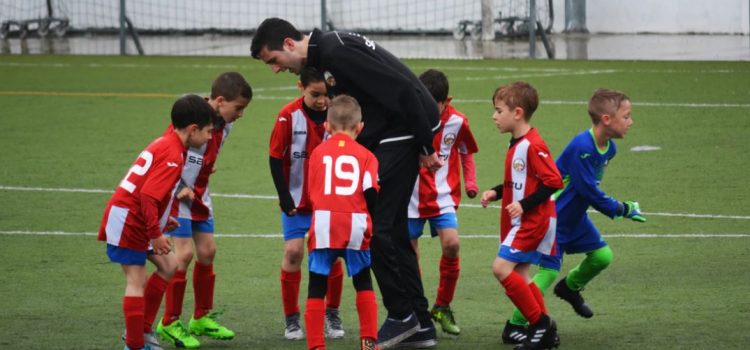

This article is an excerpt from the Shortform book guide to "Grit" by Angela Duckworth. Shortform has the world's best summaries and analyses of books you should be reading.
Like this article? Sign up for a free trial here .
What are the advantages of extracurricular activities? How does engaging your children in extracurricular activities help them develop grit?
In her book Grit, Angela Duckworth discusses the many benefits extracurricular activities have in the development of grit. They help children cultivate the four elements of grit, develop high self-esteem, and improve academic performance.
Keep reading to learn how extracurriculars can help your child develop grit.
Extracurriculars and Grit
To foster grit in children, Duckworth highly recommends getting them involved in extracurricular activities. There are many advantages of extracurricular activities: they have been shown to correlate well with student outcomes like better grades, higher self-esteem, and lower delinquency. In particular, studies show that the longer and the more intensely a child engages in an extracurricular, the better the outcomes.
Extracurriculars Predict Success
Duckworth points to numerous studies showing that children who participate in extracurriculars do better on almost every metric: grades, self-esteem, behavior, and so on. Further, these benefits last across many years—committing to an extracurricular has a positive correlation with graduation rate, employment, and salary.
Notably, Duckworth observes that these long-term benefits of extracurriculars only exist among kids who commit to them for more than a year, and are more strongly correlated with kids who also achieve some kind of measurable advancement in the activity (for example, making the varsity team or being appointed editor of the school newspaper). She theorizes that this is because grit is a measure of pursuing a goal over the long term, and extracurricular activities are a way to practice grit. Therefore, those who stick with them for multiple years are getting more dedicated grit-practice.
In fact, she says, studies show that, after controlling for grades and SAT scores, follow-through—the ability to stick with a project—over several years predicted the future success of high school students more than any other identified personal characteristic (including socioeconomic status, career interests, educational goals, and over 100 other factors).
| Do Grades Predict Success Better Than Follow-Through? Duckworth discusses studies showing that follow-through is the strongest predictor of future success, but glosses over the fact that these results are apparent only after controlling for grades and SAT scores, leaving the question: Are grades and SAT scores actually stronger predictors of success? Other researchers examining this issue have concluded that the strongest predictor of success is grade-point average (GPA), but not SAT or other standardized test scores. Consistently, across high schools from varying geographic and socioeconomic areas, GPA is strongly correlated with college graduation rates and course achievement, while standardized test scores had no consistent correlation—sometimes they were positively related, sometimes there was no relation, and even sometimes, there was a negative correlation, where higher ACT scores were associated with decreased graduation rates. Researchers theorize that GPA is a result of not just test-taking ability, but also a wide variety of skills that are needed to succeed in college. In contrast, standardized tests measure a narrow set of skills, and are something that students can prepare for in specific, limited ways that may not translate into a better college experience. Duckworth’s theories of grit do seem to be positively correlated with GPA, as grittier students are the ones who consistently study, show up to class, and put the effort in over the course of their four years in high school. Therefore, while the studies she references control for GPA, they may be equally insightful even if they did not, as both follow-through and GPA seem to be strong indicators of success—although not SAT or other scores. |
Why Are Extracurriculars So Helpful?
Duckworth discusses two main reasons why extracurriculars are so beneficial:
1. Extracurriculars are designed to cultivate the four elements of grit—interest, practice, purpose, and hope. Importantly, kids feel both challenged and interested when engaging in extracurriculars. In other activities, they often feel only one or the other: In class, they’re challenged but uninterested, and with friends, they’re interested but not challenged. Being both challenged and interested leads to grit.
| Extracurriculars in History Duckworth’s admiration for extracurriculars is part of a long cultural tradition—both parents and teachers have long been aware of the character-building potential of participating in sports and clubs. Psychologists started seriously examining these effects in the 1930s, positing three reasons to explain the correlation between extracurricular participation and higher grades: Through organized games, students learn how to: -Follow instructions—how to listen to them and apply them toward the desired outcome. -Students learn how to set goals and solve problems. -Students learn the importance of both motivation and persistence. This last point, in particular, corresponds to Duckworth’s point that kids participating in extracurriculars are both interested and challenged—terms that mirror motivation and persistence. |
2. Extracurriculars are led by an unrelated adult who offers supportive and demanding guidance. These adults act as complementary role models to parents—parents can find it hard to offer honest feedback to their children, often defaulting to praise for any effort. A coach or teacher is more emotionally removed from the child and is often able to be more straightforward, enforce rules more closely, and demand more accountability.
| An Outside Authority Has Credibility Although parents are usually the primary “coaches” of their children, many people have argued that outside of the home, having a non-parent coach can be extraordinarily beneficial. Duckworth notes that coaches and teachers who aren’t related to a child can often evaluate their behavior, strengths, and weaknesses with more fairness and honesty. Others note that because of this understood impartiality, children are likely to take the guidance of a coach or teacher to heart more readily. For example, if your parent says, “I know you can do this,” you might not be as inspired as you would be if your coach said the same words—you’re probably used to such encouragement from your parents and therefore might take it less seriously. |
Causation or Correlation?
Duckworth acknowledges that there’s no definitive answer as to whether participation in extracurriculars is a cause of future success or if it’s simply correlated with it—do extracurriculars train grit, or do gritty people tend to participate in extracurriculars?
Duckworth suggests it’s both. Commitment to an activity requires a baseline of grit, and then builds it at the same time. A student may initially get involved in an activity because they have a certain amount of interest (or because a parent makes them), but very often, their involvement turns out to be a transformative experience, through which they learn from others, develop their priorities, and develop character.
Psychologists call this the “corresponsive principle,” which states that the traits that steer us toward certain life situations are the same traits that those situations reinforce.
The corresponsive principle can create both virtuous and vicious cycles. For example, if you’re the type of person who likes to experiment, you may take up painting and enjoy trying out different methods and mediums. Each time you discover a new way to do a painting, you feel a satisfactory breakthrough, which encourages you to continue with the hobby, learning more as you experiment more. This would be a virtuous cycle.
In contrast, if you’re someone who worries a lot about money, you may be hesitant to invest in the stock market because you worry about the risk. As a result, you may miss many opportunities to increase your wealth, which would alleviate your financial anxiety, and therefore, you never achieve a level of financial security that would get rid of your worry. This would be a vicious cycle.
| Exploring the Corresponsive Principle While studies acknowledge that there’s no way to determine if extracurriculars lead to grit (and then success) or if gritty (and more successful) students are more inclined to sign up for extracurriculars, the question might be posed in reverse: If a student who has natural grit and ambition doesn’t have the opportunity to participate in extracurriculars, would that student end up developing the same success-oriented skills that they would have if they’d the opportunity to engage in the extracurricular? For ethical reasons, a controlled experiment testing this question has never been run—there are ethical limits to how much researchers can meddle in a child’s life and, for example, tell a student who wants to sign up for debate club that they aren’t allowed to. However, given the fact that extracurriculars actively teach kids success-oriented skills and provide opportunities for practicing those skills, it’s likely that kids who participate in activities, and are therefore practicing success-oriented skills, will develop these skills more than kids who don’t participate, independent of the initial reasons the kids signed up. This is another way to look at the corresponsive principle, and to answer the chicken-or-egg debate on which comes first: Does grit lead to participation, or does participation lead to grit? The answer can be both. Grit may lead a child to participate in extracurriculars, but that doesn’t negate the positive effect that the extracurriculars will have on the child’s grit. |
Extracurriculars Teach Transferable Industriousness
Duckworth notes that much of the thinking on the benefits of extracurriculars is theoretical and hasn’t been tested experimentally. A proper experiment would assign a random assortment of students to activities randomly and track them to see if they develop grit that then transfers to other areas of their lives, like schoolwork. Of course, these types of experiments would be unethical—they’d be too intrusive in kids’ lives.
However, as a proxy for these kinds of experiments, she points to research examining whether doing difficult tasks prepares a person to conquer other difficult things. For example, lab rats are better able to figure out puzzles if they’ve been fed in a way that requires them to work for their food rather than just eating it off the floor. The same effect has been seen in children: School kids who are given difficult tasks work harder and longer on other, unrelated difficult tasks later.
Adopt a Difficult Extracurricular
Duckworth advises that to develop grit in your kids (or students, mentees, and so on), you require them to commit to an extracurricular activity, separate from school or work, that gives them a long-term goal to work toward. The parameters for this strategy are:
- Everyone in the family has to do a hard thing. A hard thing requires daily deliberate practice (such as learning guitar or training for a half-marathon).
- Everyone gets to pick their own hard thing. This develops interest.
- Everyone is allowed to quit, but not until a natural stopping point. Examples of stopping points include an orchestra recital or a race. They can’t quit just because they change their mind, have a bad day, or decide the activity is getting in the way of more fun pursuits (like hanging out with friends). After the natural stopping point, they are free to choose a different activity or continue with their current one. Duckworth recommends that for older kids (high school age), you require them to stick with a project for two years, then allow them to either switch to something else or continue.
Duckworth recommends that you yourself also choose an activity to work toward. This will model grit for your kids.
Extracurriculars and Inequality
Duckworth notes, with concern, that students in lower-income areas have less access to extracurricular activities than do students in better-off regions. There are several reasons for this. Schools that are strapped for cash cut extracurricular activities to save money. Many sports require sign-up fees, and even when they don’t, have uniforms and equipment that can be cost-prohibitive for families without disposable funds. The same goes for music activities, which require instruments and instruction. Additionally, extracurriculars require a time commitment that working parents may not be able to accommodate, nor do all families have access to transportation for games, practices, and lessons.
This inequality prevents kids in lower-income areas from developing the important skills of grit that are often fostered in students from wealthier areas. The difference is measurable: Duckworth observes that grit scores of lower-income high-school seniors were a full point lower than those of wealthier students in the samples she tested, indicating a troubling correlation between grit and socio-economic status.
| Additional Repercussions of a Lack of Extracurriculars Researchers worry that low rates of lower-income student participation in clubs and sports will damage these students’ futures in more ways than just a lack of grit-training. Lower-income kids are more likely to grow up in neighborhoods where drug and alcohol use, violence, and early sexual activity (often leading to teen pregnancy) are common. Supervised activities can provide alternatives to these types of pastimes and thus keep kids from making lifestyle choices that can trap them in poverty. In addition, extracurriculars often provide networking opportunities that can turn into job prospects, so not participating in extracurriculars can thus shut these kids out from career opportunities. And, not having a well-rounded resume can put them at a competitive disadvantage when applying for colleges. While there are no easy answers to this problem, educators advise lower-income parents and students to seek out low-cost activities like volunteering. Others note that youth mentoring programs like Big Brothers Big Sisters can have significant social and academic impacts on young people growing up in difficult environments. |

———End of Preview———
Like what you just read? Read the rest of the world's best book summary and analysis of Angela Duckworth's "Grit" at Shortform .
Here's what you'll find in our full Grit summary :
- How your grit can predict your success
- The 4 components that make up grit
- Why focusing on talent means you overlook true potential







Nice Article. Its very importance and useful information for student. Thanks for sharing the Advantages of Extracurricular Activities for School Students.